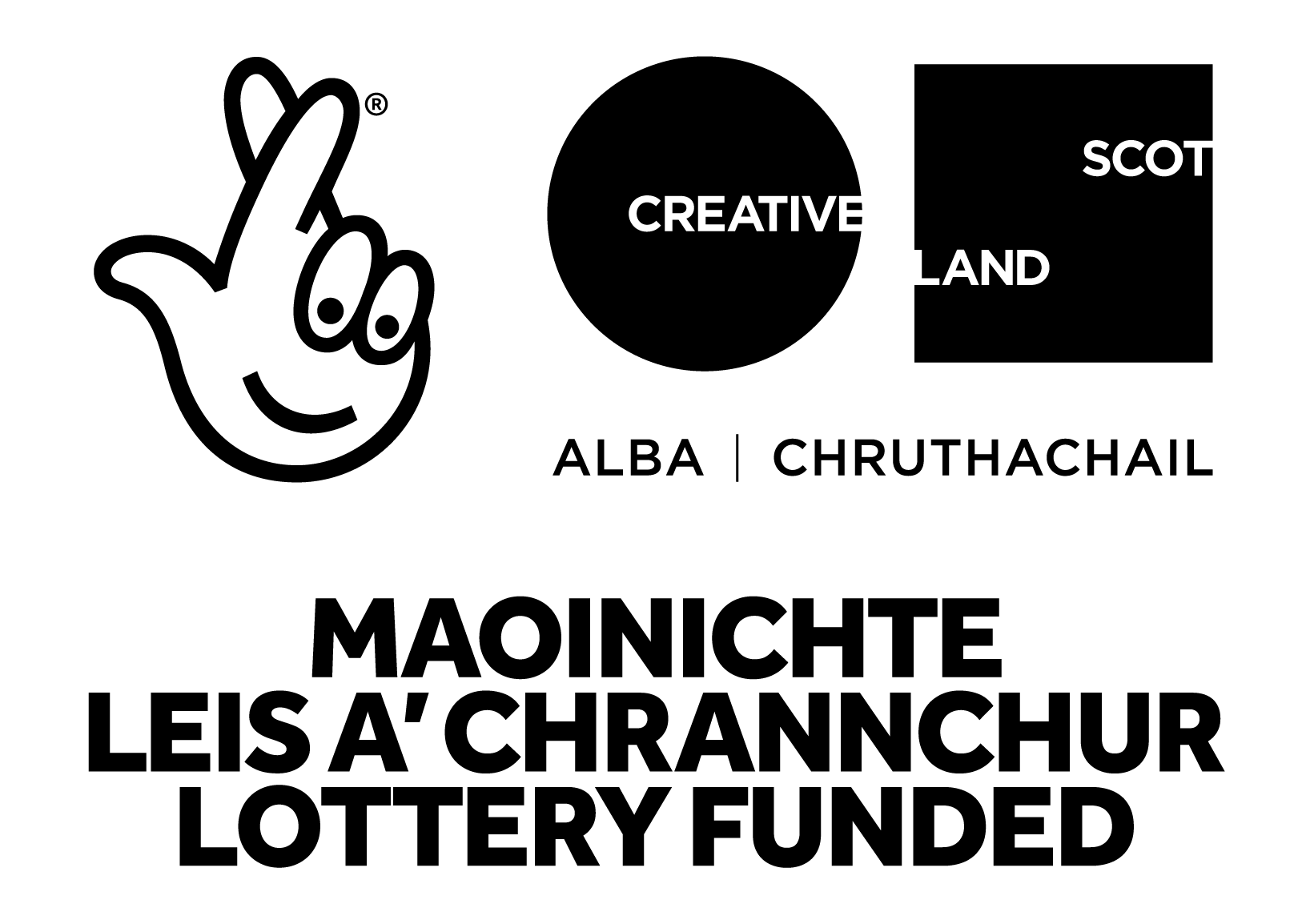Royal National Mòd News
Prominence for people who paved the way for Argyll’s proud Gaelic heritage
Published: 30 Sep 2024

The stories behind some of the most inspiring and significant figures in Gaelic musical heritage and their close ties to Oban and Argyll – the spiritual home of the country’s biggest standalone Gaelic cultural event – are set to be explored in two enlightening exhibitions.
The Royal National Mòd® will take place in Oban this October for the 17th time – an area steeped in Gaelic cultural history.
The annual event was founded by An Comunn Gàidhealach in Oban in 1891 and the debut National Mòd was held in the town the following year, some 132 years ago.
At that event in 1892, Jessie’s performance before Princess Louise, who was married to the Marquis of Lorne, led to a personal audience with Queen Victoria at Balmoral, a gift of a diamond brooch from the Queen in appreciation, and the first step to a glittering career.
A bona fide vocal superstar, Jessie’s career took her from her birthplace in Oban to perform around the world, from Canada and the United States to New Zealand and Australia. Alongside the Royal family, Jessie quickly gathered fans among notable figures across Europe.
Jessie will be the subject of a special exhibition at this year’s Mòd, back in her hometown and Scotland’s Gaelic heartland. The exhibition will delve into her remarkable life and enduring legacy, returning her to rightful prominence.
Running from Saturday 5th to Sunday 20th October across the week of the Mòd at the Caledonian MacBrayne Ferry Terminal on South Pier, the exhibition is curated by women – celebrated Gaelic singer Mary Ann Kennedy, academic Dr. Priscilla Scott and museums curator Marij van Helmond – in honour of the woman who paved the way for taking the Gaelic language and song to global stages.
Affectionately called Smeòrach nan Gàidheal, which means Songbird (thrush) of the Gaels, Jessie began singing aged eight and was first recorded on gramophone in Glasgow in 1899. This marked another world-first for Jessie as it was the first time Gaelic songs had ever been recorded on a gramophone.
Exhibition curator and Gaelic singer and broadcaster Mary Ann Kennedy said: “Jessie was a global superstar, the first voice – spoken or sung – to be recorded in Gaelic. Her first love was her mother-tongue Gaelic language and the Gaelic people who she crossed oceans to visit and sing for. To bring her remarkable legacy to life in this exhibition during such a fitting event is an incredibly proud moment and I feel like I know Jessie as a person now, rather than just a figure in history.
“When we consider that we still contend with issues of parity in the performance world today, Jessie’s grit, graft and determination to make it as a singer in a world that looked askance at female stage performers of any kind is truly remarkable. She’s a great role model for all young women, musicians and Gaels alike. Her star waned through a combination of the horrors of the Great War, her relatively young age, and a general lack throughout history of affording great women their place, but I feel like we’ve allowed it to shine once more.”
Jessie died as a result of illness caught during a journey home from France through Spain at the dawn of WWI. Her funeral was attended by hundreds and a memorial stone erected in her name in 1921.
In the wake of WWI and WWII, Jessie’s star had waned. Her grave was rediscovered and restored in 2020 by the same team behind the exhibition. The Gaels also worked with Gaelic educational resources body Stòrlann to create an online destination for young people to learn about Jessie. In the short time since publication, the learning resource files have been downloaded more than 11,000 times.
Mary Ann Kennedy added: “Since we published the Stòrlann’s learning resources just a few months ago, there’s been over 11,000 downloads of the files connected to Jessie’s story. It’s important that Gaelic and Gaels get to tell stories of their successes, influences and significance. It’s important that young people get to hear about women like Jessie so that they can take pride in their own heritage and know that it has a place in global history.
“This exhibition is the final element of a long-term project to bring Jessie back home to her beloved Oban and Argyll – the setting for her debut performances at the first Mòd, which set her on her spectacular career.
“Jessie was buried in Glasgow, and albeit facing north to the Argyll hills, she didn’t get to return to her beloved homeland. We call the honouring of someone no longer with us to be ‘a’ cur clach air càrn’ – placing a stone on the cairn. I feel that through the restoration of her memorial in the Cathcart Cemetery and this exhibition that we’ve done just that.
“I love that the exhibition will be displayed in the CalMac Ferry Terminal, right next to the Victorian railway line that would have been Jessie’s path to the outside world and all her adventures beyond. It will be a chance for locals, Mòd-goers and passing travellers alike to learn more about this remarkable woman who never lost the human touch.
“We now have an incredible bank and ever-evolving catalogue of Gaelic song recordings, but it is important to stop and acknowledge where this began and share the untold story of how one of history’s most inspiring walked this path so that more of us could follow.”
The region’s rich choral singing tradition and the groups who sang on local and national stages together is also the focus of an exhibition running for the duration of the Oban Mòd at The Rockfield Centre.
The Argyll Choirs Exhibition is curated by Eleanor Mackinnon and the Oban Heritage Hunters and will celebrate the many Argyll-based choirs that have graced the Mòd stages over the years.
Organisers estimate around 20 Gaelic choirs have operated in Argyll over the last 60 years, including four from Mull, with the longest standing – Oban Gaelic Choir – dating back to 1892.
The exhibition will showcase photos, many of which are shared courtesy of the Oban Times, alongside old programmes from the heritage group’s archives, all showing Argyll’s long-held love affair with singing Gaelic songs with one another. Archive video footage courtesy of BBC ALBA will also bring the sounds of Argyll choir members back to life and give visitors the opportunity to roll back the years and experience Mòd performances of years gone by.
A new short film, created by Oban filmmaker Anna Garvin, will also feature as part of the exhibition, giving an insight into what it’s like to be part of a Gaelic choir and showing the commitment and passion people give to these groups and the joy and sense of belonging they receive in return.
Exhibition curator Eleanor Mackinnon said: “Our heritage group realised we had a rich back catalogue of photos and other material within our local social history collection that we were able to make publicly available to visitors, so we set about creating this exhibition.
“Our aim is to offer a space to unlock memories and continue conversations across all generations about the incredible history of Gaelic choirs in Argyll. The exhibition would not have been possible without the support of the Oban Times and the response from the Gaelic and local community who have shared choir photos and other material with us from over the years.
“This is our way of welcoming the Mòd back to Oban this October. To be able to share our cultural heritage with thousands of visitors is a special thing.”
This year’s Royal National Mòd in Oban is supported by EventScotland, Bòrd na Gàidhlig, Argyll and Bute Council, BID4Oban, The Scottish Government, Caledonian MacBrayne, BBC ALBA, Creative Scotland and SQA.
The Royal National Mòd® takes place in Oban from 11 - 19 October 2024.
« Back to Mòd News List
-
Latest ACG News
-
New Staff
Published: 10 Dec 2025 -
ACG Newsletter
Published: 04 Dec 2025 -
Poolewe Local Mòd Meeting
Published: 18 Nov 2025
-
New Staff
-
Royal National Mòd News
-
Boost to Gaelic proficiency under new Royal National Mòd choir competition plans
Published: 28 Oct 2025 -
Curtain comes down on Royal National Mòd in Lochaber as Glasgow gets set to host in 2026
Published: 18 Oct 2025 -
Singers soar into the history books at the Royal National Mòd
Published: 17 Oct 2025
-
Boost to Gaelic proficiency under new Royal National Mòd choir competition plans
- Local Mòd News
-
Poolewe Local Mòd Meeting
Published: 18 Nov 2025 -
New Local Mòd for Moray as Gaelic reach grows
Published: 29 Sep 2025 -
East Kilbride Local Mòd 2025
Published: 05 Jun 2025
-
Poolewe Local Mòd Meeting












